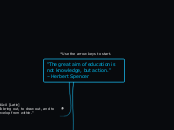U10 ACTIVITY TYPES
Type in the name of the book you have read.
FEATURE IDENTIFICATION
Type the main events of the book, classifying them in: events from the beginning, events from the middle, and events from the end of the book.
Describe the story visually. Add a representative picture for each of them.
Feature identification allows you to point out characteristics of each subject in a certain context.
For example; If you covered a topic about nouns in class, it would be helpful to identify nouns in sentences given by your teacher to memorize its functions.
Type the main events from the beginning.
Add a representative picture for each of them.
INFORMATION TRANSFER
In contrast to the main idea, the theme is the message, lesson or moral of the book.
Some tips to find out the theme of the book easier:
- Try to find it while you are reading. It may be stated or implied.
- Think about how the characters reacted to obstacles.
- Think about the important decisions that the characters made.
- Think about the characters growing or changing throughout the book.
For example in the Science subject we can use for a final activity at the end of the class
This kind of activity is one of the most successful to be dynamic when learning, using pictures or maybe a diagram.
COMPLETION
A check (tick) appears against the activity when the student meets this criterion. The criterion might be viewing, receiving a certain score or a student marking it as complete.
Activity completion allows the teacher to set completion criteria in a specific activity's settings.
Take notes while you read the book. Write here your favorite quotes from the book.
CATEGORIZATION
Take notes while you read the book. Type here the resources, books, or websites that the author mentioned and you want to check out later.
Categorization is an activity that consists of putting things (objects, ideas, people) into categories (classes, types, index) based on their similarities or common criteria.
TRUE/FALSE
True or false learning questions are factual based, rather than opinion-oriented, and are designed to quickly and efficiently test learner knowledge about a particular idea or concept.
The main idea is what the book is mostly about.
Some tips to find out the main idea of a book easier:
- Read the title.
- Look for the text features.
- Figure out if you are reading a fiction or a non fiction book.
- Think about some examples that support this idea.
MULTIPLE CHOICE
Type the names of the book characters. Start with the main character.
Draw arrows to represent the relationship between them and if it is possible write on them what they represent for each other (if they are relatives, friends, lovers, enemies etc.)
Having multiple answers to choose is a key part of the self confidence development of the students. They must make sure that the idea they have in mind is correct according to the reviewed information before and their current knowledge.
E.g In Math we can use this kind of activity to do a review about the areas of the geometric shapes. Choose the correct formula to find the area of the next triangle.
What are the characteristics that best describe the character? Type them here.
MATCHING
What is the reason why the author wrote the book?
Helps students to stimulate their brain and analyze the given content. It will be easier for them to learn important information by remembering concepts and meanings.
FILL IN THE BLANK
Who is the author of the book? Type in his/her name.
Fill in the blanks activities develop the memorization skills of the students as they must practice writing and reading texts.
Most forms show questions one after another, with a title followed by a text box or dropdown list.
Activities in CLIL is used for communicating, developing listening and reading strategies and supporting written or physical production.









